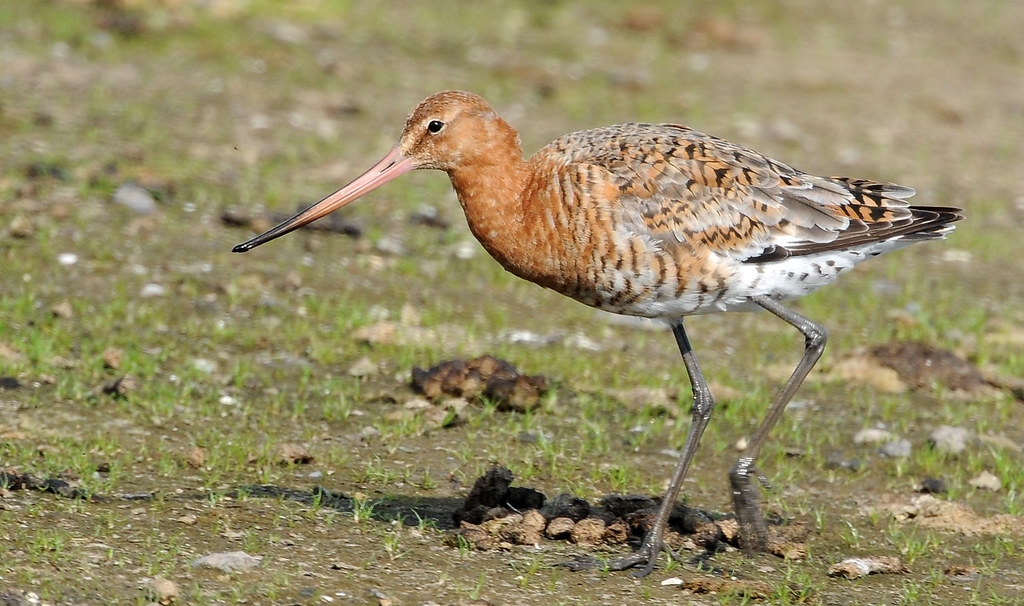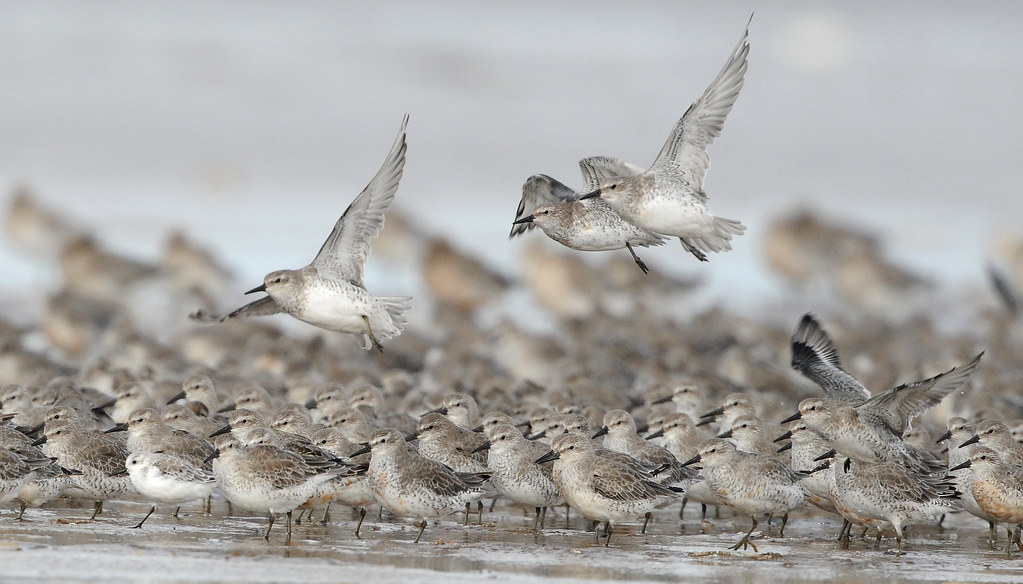....and a bit of a walkabout.

Black-tailed Godwit. Brian Rafferty.
For the second time in two weeks I estimated at least 650 Black-tailed Godwit on the Lune Estuary at Glasson Dock representing the highest count for the species anywhere in our recording area to the exclusion of the Eric Morecambe Complex at Leighton Moss RSPB Reserve where the peak count in the spring of 2010 was in excess of 2,000 birds, and where at times most - if not all - the population moved to, including the coast between Hest Bank and Silverdale, or the floods at Warton.
There appears to be no obvious explanation for this increase in the numbers of Black-tailed Godwit in our area, though one view is that it is simply a shift of population from the Wyre and Ribble Estuaries, but both these areas have also seen similar increases in the species. Also, the breeding population of Icelandic Black-tailed Godwits islandica had a dramatic increase during the 1990's which has also seen a rise in breeding productivity.
And the walkabout....
Having had to go into Lancaster in the early afternoon yesterday, I went armed with my binoculars and later embarked on a walk from Skerton Bridge along the River Lune to Aldcliffe.
Having had to go into Lancaster in the early afternoon yesterday, I went armed with my binoculars and later embarked on a walk from Skerton Bridge along the River Lune to Aldcliffe.
Goosander. Brian Rafferty.
From Skerton Bridge looking upstream I could just about count 18 Goosander towards the weir, the walk to Marsh Point produced 7 Goldeneye. On Freeman's Pools a Little Egret held the otherwise deserted fort. On Aldcliffe Marsh, 3 Little Egret, up to 3,000 Pink-footed Geese, and with no telescope had me feeling like I was out without my pants on. A Goosander female was on the Wildfowlers Pool. On the flood at least 30 Pied Wagtail and a Song Thrush to note. On the steeple of St Peters Cathedral, on the last window before the point, a Peregrine Falcon must have had the entire City of Lancaster to the west, north, and south in view.
Thanks to Brian Rafferty for the Black-tailed Godwit and for the brilliant image of drake Goosander which bit off more than it could chew on this occasion according to Brian's account. It always amazes me the size of some of the catches these diving species can devour, I think we've all seen the Cormorant putting down fish the size of a dinner plate.
Thanks to Brian Rafferty for the Black-tailed Godwit and for the brilliant image of drake Goosander which bit off more than it could chew on this occasion according to Brian's account. It always amazes me the size of some of the catches these diving species can devour, I think we've all seen the Cormorant putting down fish the size of a dinner plate.
.JPG)






























.JPG)








